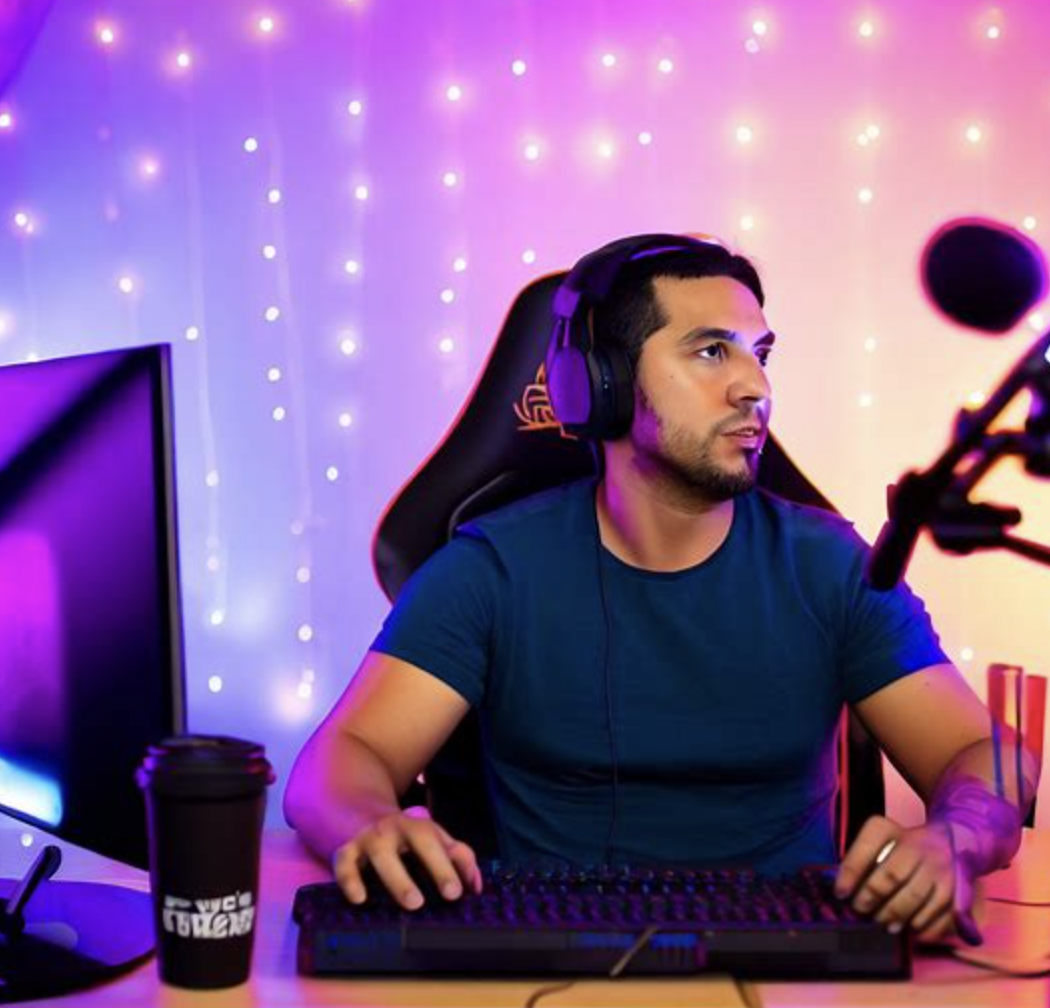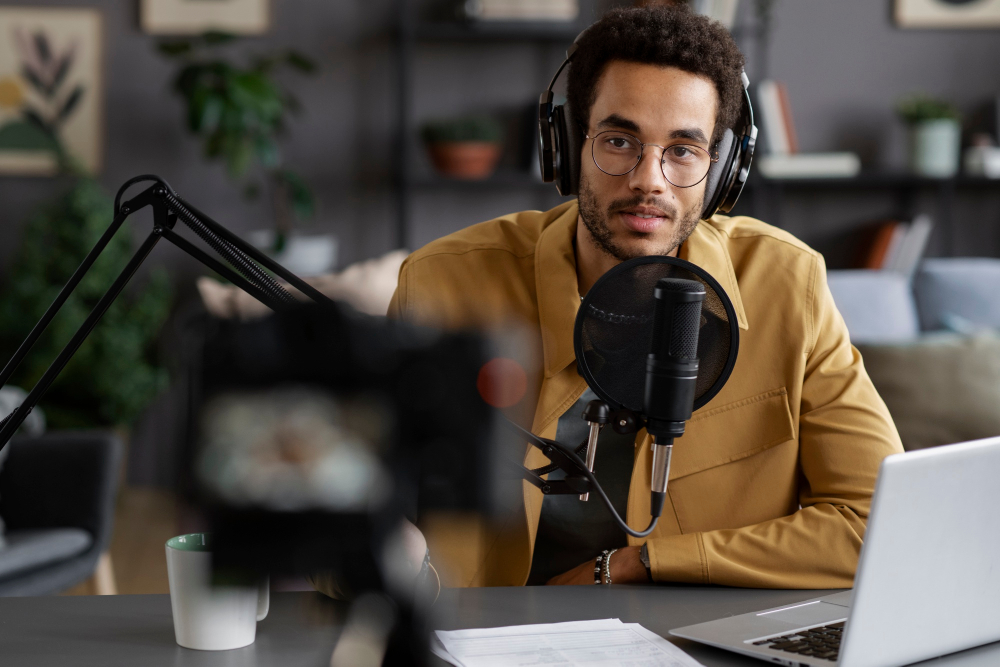Video podcasts have become increasingly popular in recent years, allowing content creators to engage with their audience in a more dynamic and interactive way.
But what tools and equipment do people use to create these video podcasts? In this article, we will explore the different options available for recording, editing, and publishing video podcasts.
1. Descript
Descript is a powerful tool that offers a range of features specifically designed for podcasters. With Descript, you can edit your video podcast as easily as editing a document or presentation. Some key features of Descript include:
- Video Editing: Edit your video podcast using the same intuitive interface as working with documents and slides.
- Multitrack Audio Editing: Easily edit multiple audio tracks to create a seamless podcast experience.
- Transcription: Descript offers industry-leading accuracy and speed in transcribing your podcast episodes. It also provides powerful correction tools to ensure accurate transcriptions.
- AI Voices: Create realistic voice clones or choose from a selection of stock AI voices to add narration or dialogue to your video podcast.
- Remote Recording: Record crystal-clear podcasts and videos with others, no matter where they are located.
- Screen Recording: Capture, edit, and share screen recordings or webcam footage directly within Descript.
Descript offers a range of pricing options to suit different needs and budgets. Whether you’re just starting out or an experienced podcaster looking for advanced editing capabilities, Descript has something for everyone.
2. Zoom
Zoom is a popular choice for remote recordings in the podcasting world. With its easy-to-use interface and reliable performance, Zoom allows you to record interviews or conversations with guests from anywhere in the world. Some key features of Zoom include:
- Camera and Video Recording Software: All you need is a device with a built-in camera (such as a laptop, tablet, or smartphone) and an internet connection to start recording your video podcast.
- Microphone: Zoom does a decent job of picking up audio, but for better sound quality, consider using an external microphone.
- Headphones: Wired headphones are recommended to ensure clear audio during recordings.
- Lighting: Good lighting is essential for a visually appealing video podcast. Position yourself facing a window or use lamps to enhance natural light.
Zoom offers various pricing plans, including a free option with limited features and paid plans that offer additional benefits such as longer recording times and cloud storage.
3. GoPro
If you’re looking for high-quality video footage, GoPro cameras are a popular choice among video podcasters. These compact and versatile cameras offer excellent image stabilization and can capture footage in various environments. Some key features of GoPro cameras include:
- High-Quality Video: GoPro cameras provide superior video quality compared to built-in laptop or smartphone cameras.
- Mounting Options: Use tripods or other mounts to ensure stable footage during recordings.
- External Microphone: For better sound quality, consider using an external microphone compatible with your GoPro camera.
- Lighting: As with any video recording, good lighting is essential. Position yourself in a well-lit area or use additional lights to enhance visibility.
While GoPro cameras can be more expensive than other options, they offer professional-grade video capabilities that can elevate the production value of your podcast.
4. DSLR Cameras
For those seeking even higher quality video recordings, DSLR cameras are an excellent choice. These cameras provide exceptional image quality and offer manual control over settings such as aperture, shutter speed, and ISO. Some key features of DSLR cameras include:
- Superior Image Quality: DSLR cameras produce stunning visuals with rich colors and sharp details.
- Interchangeable Lenses: With a wide range of lenses available, you can achieve different perspectives and effects in your video podcast.
- Tripod: Use a sturdy tripod to ensure stable footage during recordings.
- External Microphone: For optimal audio quality, invest in an external microphone compatible with your DSLR camera.
- Lighting: Good lighting is crucial for capturing high-quality video. Consider using studio lights or natural light sources to enhance the visuals.
While DSLR cameras can be more expensive and require some technical expertise, they offer unparalleled image quality and creative control over your video podcast production.
5. Smartphone Cameras
In recent years, smartphone cameras have significantly improved in terms of image quality and functionality. Many content creators use their smartphones to record video podcasts due to their convenience and accessibility. Some key features of smartphone cameras include:
- Portability: Smartphones are compact and easy to carry, making them ideal for on-the-go recordings.
- High-Quality Video: Modern smartphones offer impressive video capabilities, with some models even rivaling DSLR cameras.
- Mounting Options: Use tripods or smartphone mounts to stabilize your phone during recordings.
- External Microphone: For better audio quality, consider using an external microphone compatible with your smartphone.
- Lighting: Make use of natural light sources or additional lights to ensure good visibility in your video podcast.
Smartphone cameras provide a cost-effective solution for creating video podcasts without compromising on quality.
6. Lighting Equipment
Regardless of the camera you choose, proper lighting is essential for creating visually appealing video podcasts. Here are some options for lighting equipment:
- Ring Lights: Ring lights provide soft and even lighting by surrounding the camera lens with a circle of LED lights. They are easy to set up and often come with adjustable brightness settings.
- Studio Lights: Studio lights offer more versatility in terms of controlling the intensity and direction of light. They are commonly used in professional video production setups.
- Natural Light: If possible, position yourself in a well-lit area near a window to take advantage of natural light. This can provide a pleasing and natural look to your video podcast.
Experiment with different lighting setups to achieve the desired aesthetic for your video podcast.
7. Audio Equipment
While video quality is important, don’t overlook the significance of high-quality audio in your video podcast. Here are some options for audio equipment:
- External Microphones: Invest in a good quality external microphone that suits your recording setup. Directional microphones and lavalier microphones are popular choices among podcasters.
- Headphones: Use wired headphones to monitor audio levels and ensure clear sound during recordings.
- Audio Interfaces: If you’re using XLR microphones or multiple audio sources, consider using an audio interface to connect them to your recording device.
- Pop Filters: Pop filters help reduce plosive sounds (such as “p” and “b” sounds) for clearer audio recordings.
Remember, clear and crisp audio is crucial for engaging your audience and delivering a professional podcast experience.
In conclusion, there are various tools and equipment available for creating compelling video podcasts. Whether you’re just starting out or looking to upgrade your existing setup, consider factors such as budget, desired image quality, portability, and ease of use when choosing the right tools for your video podcasting needs. With the right equipment and creativity, you can create engaging and high-quality video content that resonates with your audience.
Looking for a way to easily clip and share your best YouTube Video Podcast moments on TikTok/Shorts/Reels?
Most editor tools are still not practical for this task, but Eklipse is the best alternative. With Eklipse, you can quickly and easily clip your favorite podcast video moments and share them on your other social media platforms in just a few taps.
Eklipse is also incredibly easy to use, even if you’re a beginner. Just download the app, import your YouTube video link, and start clipping and sharing!
So what are you waiting for? Try Eklipse today and see how easy it is to create and share amazing videos with your friends and followers.

Tech writer, gaming, streaming, gadgets. A decade’s experience. Informative, engaging.
Featured in web publications. Reviews new products. Loves gaming, tinkering.
